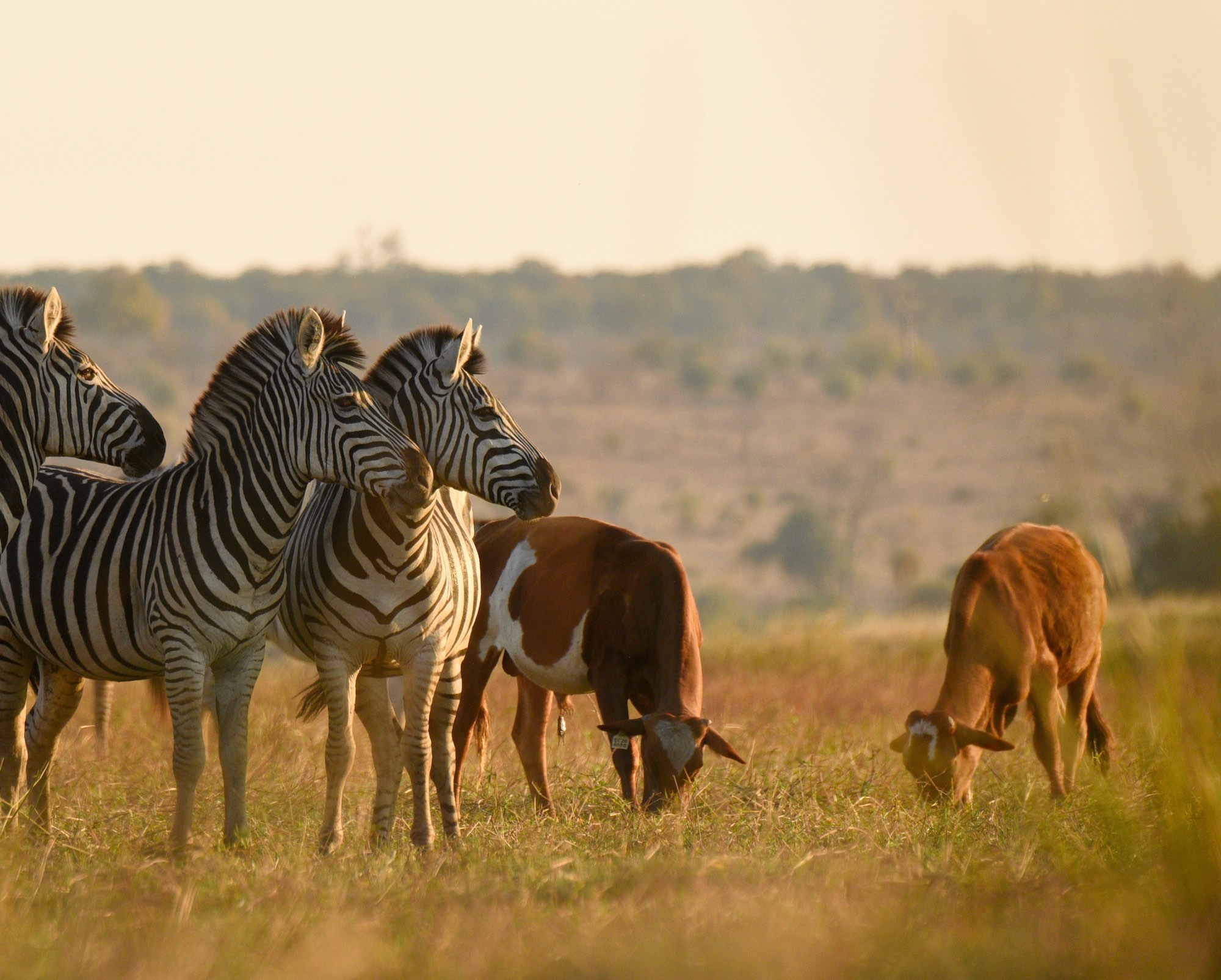
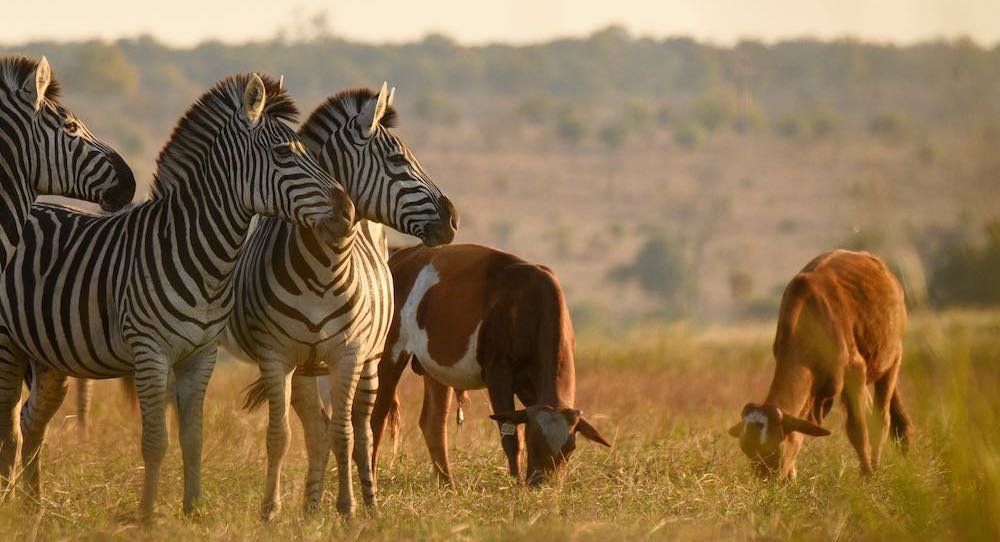
Keep Namibia's wildlife on the land!
How can we ensure healthy wildlife populations despite increasing human pressure?
2018/19
WILDLIFE IS RAPIDLY DECLINING ACROSS MUCH OF AFRICA AND OTHER PARTS OF THE WORLD
Over the last century, lions were actively eradicated as a threat to human safety and to livestock from most land used by people; lions from the remaining populations continue to be killed over livestock losses and safety concerns in communal areas and along the periphery of parks today.
Southern African rhinos were driven to the brink of extinction a century ago, but populations were rebuilt through effective conservation activities; rhinos are now being decimated again by ruthless commercial poaching for their horns.
A century ago, elephants were drastically reduced by the uncontrolled ivory trade, and displaced as a threat to crops and safety; today most of the remaining southern African populations are healthy and growing, but ruthless commercial poaching for ivory is again having an impact.
Many other species are experiencing similar declines, mostly due to land conversion to agriculture and incompatible land uses.
- Widespread concern over wildlife declines is motivating ongoing global calls for action – yet interventions often do not differentiate between countries with an excellent conservation track record, and those with declining wildlife populations.
- Attempts by foreign organisations to stop declines through field interventions often do not address the actual problems – interventions often ignore the needs of local people and conservation priorities on the ground.
- The public is unfortunately not informed accurately about the main causes for large-scale wildlife declines – media reports, social media hype and calls for donations tend to focus on the gruesome death of individual animals as indicators of decline, rather than actual causes.
- People are confusing the wellbeing of individual animals with the health of entire populations of the same species – through passionate but misguided social media outcries, many people want to prevent all animal deaths in order to stop perceived cruelty to animals and wildlife declines.
PREVENTING ALL WILDLIFE DEATHS FORCES PEOPLE TO REPLACE WILDLIFE HARVESTING WITH OTHER LAND USES

WILDLIFE WILL ONLY REMAIN ON THE LAND IF LAND STEWARDS BENEFIT FROM IT
Namibia's lion population is healthy and increasing, and is today at its highest since independence in 1990; lion range has expanded significantly, especially in north-western Namibia.
Namibia's populations of both black and white rhinos were partly rebuilt over the last three decades and former ranges were reestablished by providing economic incentives as a basis for their conservation.
Namibia's elephant population has tripled since independence and elephants have re-colonised former ranges, largely facilitated by community conservation and benefits to local communities.
Most other large wildlife species in Namibia have healthier populations today than at any time over the last 150 years.
- Differentiating between countries with successful conservation approaches and those without is essential – conservation is a science- based management activity and successful approaches should not be undermined by generalised emotional responses and inappropriate actions.
- Conservation by the people for the people is extremely successful in Namibia – by conferring rights to own and manage wildlife to local communities, the Namibian government has empowered land holders to conserve wildlife in a healthy balance with other land uses.
- Namibians embrace wildlife management as a land use, thereby safeguarding wildlife habitat throughout the country – Namibia has documented significant wildlife recoveries in parks and on communal and freehold land throughout the country for several decades.
- By harvesting small percentages of surplus animals, Namibia is keeping overall wildlife populations healthy, just as farmers anywhere in the world keep their overall livestock herds, gardens and fields healthy while harvesting an annual crop to generate income and enable development.
PROMOTING WILDLIFE USE CREATES INCENTIVES TO KEEP WILDLIFE ON THE LAND AS AN ECONOMIC ASSET

HABITAT LOSS THROUGH HUMAN LAND USES THAT ARE INCOMPATIBLE WITH WILDLIFE is the largest single cause of wildlife declines around the world.
- Displacement of wildlife by agriculture – wildlife is not tolerated in crop fields and competes with or threatens livestock.
- Degradation of habitat by unsuitable land uses – overgrazing, indiscriminate burning, logging, mining etc. may all severely degrade habitats.
- Destruction of habitat through infrastructure development – urban spread, roads, power lines, dams etc. may all destroy habitats.
- Disturbance by human activity - excessive presence and movement of people, stray dogs, traffic, noise etc. may all displace wildlife.
UNCONTROLLED EXPLOITATION AND COMMERCIAL POACHING are causing rapid declines amongst already isolated wildlife populations in many African countries.
- Poaching of animals for trade in animal parts – trade in ivory, rhino horn, skins, bones etc. is fuelling ruthless commercial poaching.
- Ruthless exploitation for personal gain – uncontrolled over-harvesting veiled as ‘legal use' is rampant in countries with poor governance.
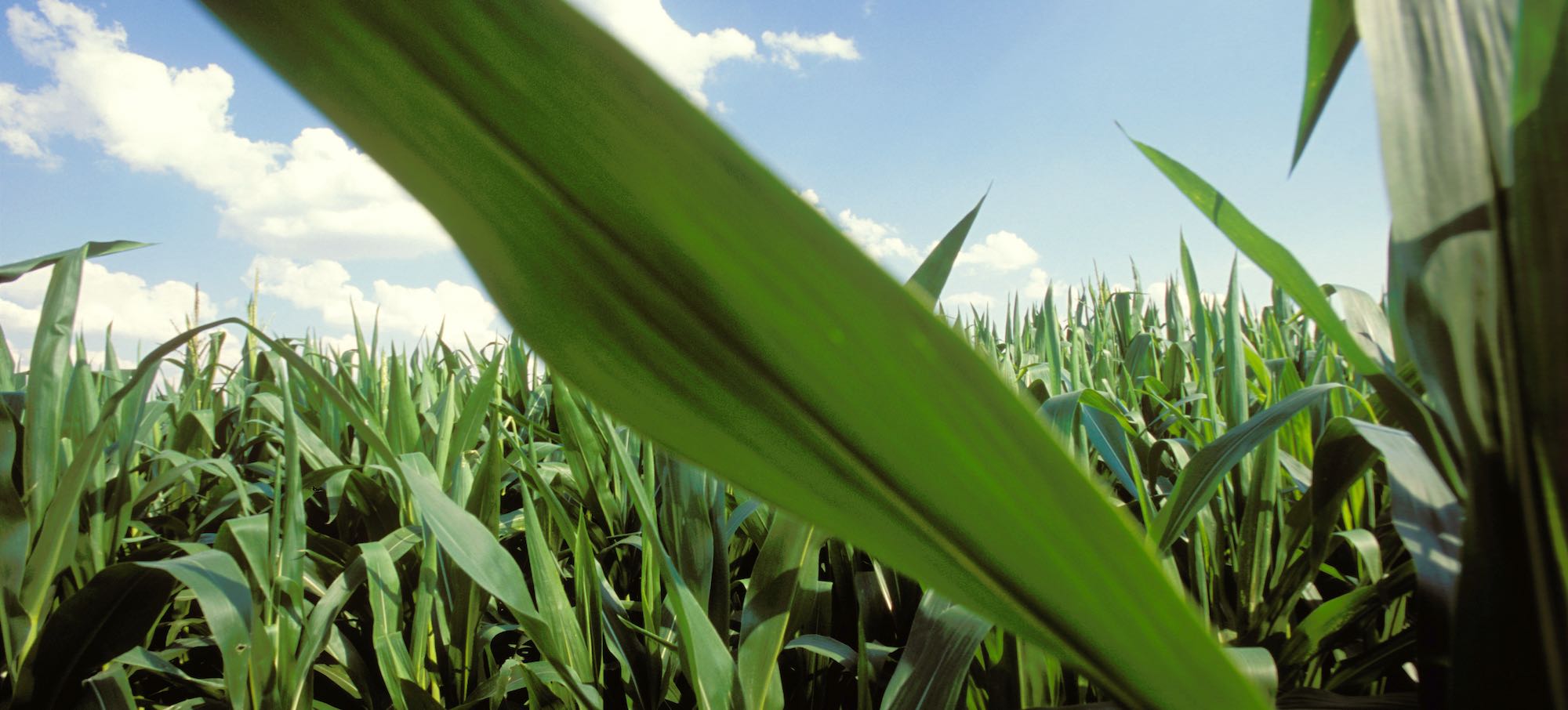
HABITAT PROTECTION AND EXPANSION THROUGH COMMUNITY CONSERVATION BASED ON WILDLIFE USE enables large- scale wildlife recoveries, mitigates human impacts and facilitates the health of ecosystems.
- Tourism motivates conservation in scenic areas, especially along major tourism routes, by generating most jobs and some conservation funds.
- Conservation hunting motivates conservation in vast areas of low tourism potential by generating most conservation funds and providing food.
- Meat harvesting motivates increasing wildlife populations by providing food and generating additional income.
- Live capture and sale enables restocking in areas with low populations and provides further income from wildlife.
All of these uses can and should be combined where possible to maximise returns and provide a variety of benefits to different people in each community.
ACTIVE AND COLLABORATIVE WILDLIFE CRIME PREVENTION limits impacts from commercial poaching by teaming up relevant stakeholders including local communities, tourism and hunting operators, NGOs and government agencies.
STRINGENT CONTROL MECHANISM FOR ALL WILDLIFE USE prevents uncontrolled exploitation and over-harvesting.
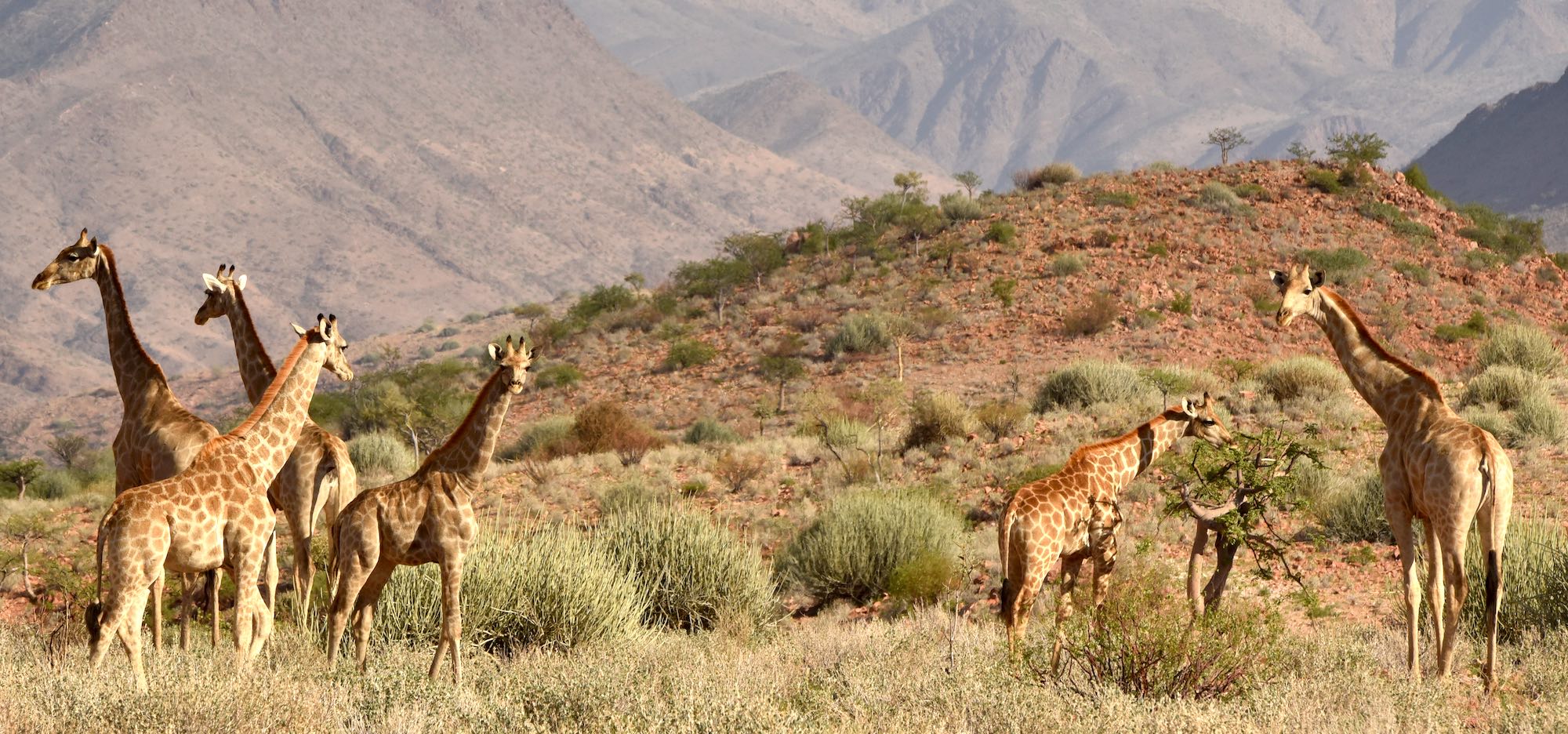
Background information:
- Namibia's economy is largely reliant on natural resources; about two-thirds of the human population live in rural areas and are directly dependent upon natural resources for their livelihoods.
- Wildlife populations have shown dramatic recoveries on both freehold and communal farmland after drastic declines prior to independence due to drought, poaching and detrimental policies.
- Healthy populations of nearly all historically occurring species now roam suitable habitat; species of particular conservation concern are receiving special attention.
- Agricultural policies and approaches, rather than conservation practices, have limited the population health of some species such as buffalo and wild dog.
- Wildlife is managed and protected in national parks, in community conservation areas and on freehold land across more than half of Namibia.
- The success is based on giving wildlife a real value for the local people who manage and protect it – and bear the cost of living with it.
- Community conservation generated over N$ 147 million in returns for rural communities and facilitated around 4,936 jobs during 2018.
- Community conservation contributed about N$ 884 million in net national income to Namibia's economy in 2018.
- The sustainable use of wildlife and other natural resources is enshrined in Namibia's constitution; natural resources are a part of our national heritage, to be used sustainably for the benefit of present and future generations of Namibians.
Conservation highlights:
- Namibia has healthy populations of black and white rhinos, including the largest free-roaming black rhino population outside parks in the world.
- Namibia's elephant population has grown from an estimated 7,500 animals in 1995 to around 22,000 today – a large percentage occurs outside parks.
- Namibia has healthy lion populations in several national parks, and an expanding lion population outside parks, which has grown in north-western Namibia from an estimated 25 animals in 1995 to around 130 today.
- Namibia has the largest population of free-roaming cheetahs in the world – the vast majority of which live outside parks.
- Namibia has healthy giraffe populations in several national parks and an expanding giraffe population outside parks.
- Namibia has healthy leopard populations in several national parks and leopards occur across much of Namibia's freehold and communal farmland.
- Namibia has a healthy crocodile population with a large percentage occurring outside parks.
- Namibia has translocated more than 10,000 animals of 15 different game species – including rare and valuable species such as black rhino, sable and giraffe – out of parks into communal and freehold areas to boost populations there.
- Namibia has reinstated several species that had become locally extinct in communal and freehold areas.
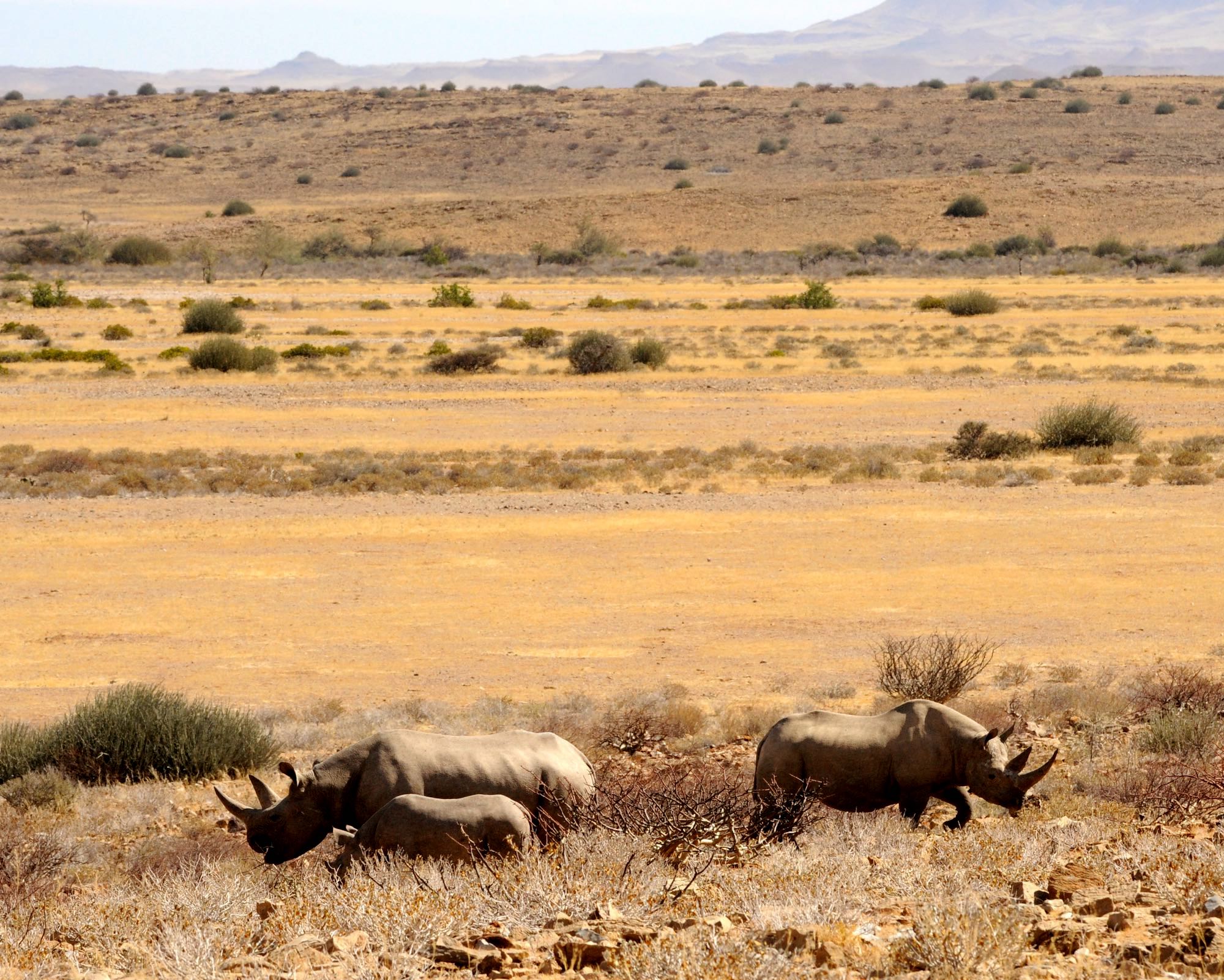
Namibia balances conservation priorities and the needs of rural communities:
In Namibia, most communal land (around 37% of the country) and privately-owned or freehold land (around 43% of the country) is used to generate a living for the land holders. Livestock herding, crop production and game management are the main land uses.
Conservation outside national parks therefore depends on giving wildlife a tangible value so that people keep it on the land – rather than eradicating it in favour of livestock, crops or other land uses.
Keeping wildlife on the land also means living with wildlife – wildlife that can be dangerous and destructive. Disney is not reality – in real life...
... lions, crocodiles and other predators eat livestock and sometimes kill people
... elephants raid crops and destroy water installations and also sometimes kill people
... many other wild animals such as hippos, buffaloes and rhinos can also be difficult and dangerous to live with.
- Wildlife use is a traditional and integral part of life in rural Africa – hunting is a part of African culture. This was the same in Europe and America – when people still lived from the land and the wildlife was still there.
- Namibia protects around 17% of its land in national parks – that's more than most countries.
- Community conservation areas cover about 21% of Namibia and embrace around 230,000 people.
- Tourism concessions in parks provide important income for neighbouring communities , promoting conservation.
- Wildlife conservation outside parks must be seen as wildlife management for the benefit of the people – not wildlife preservation for the benefit of an urban ideal.
- Rural people need the land to survive – for livestock herding, for crop production and for wildlife management.
- Wildlife management outside parks is an economic activity – just like farming – otherwise wildlife will be pushed out by land uses that generate better returns from the same land at lower costs.
- Photographic tourism is an ideal use of intact ecosystems with healthy wildlife populations , but can only be practiced in accessible areas with enough scenic interest and/or high wildlife densities – this leaves large areas without tourism value or income.
- Together, conservation hunting and tourism fund community conservation structures – including most of the 86 communal conservancies, a community conservation association in a national park (managed like a conservancy) and around 684 community game guards and resource monitors.
- Conservation hunting funds anti-poaching activities by government agencies, community conservation organisations and private sector initiatives.
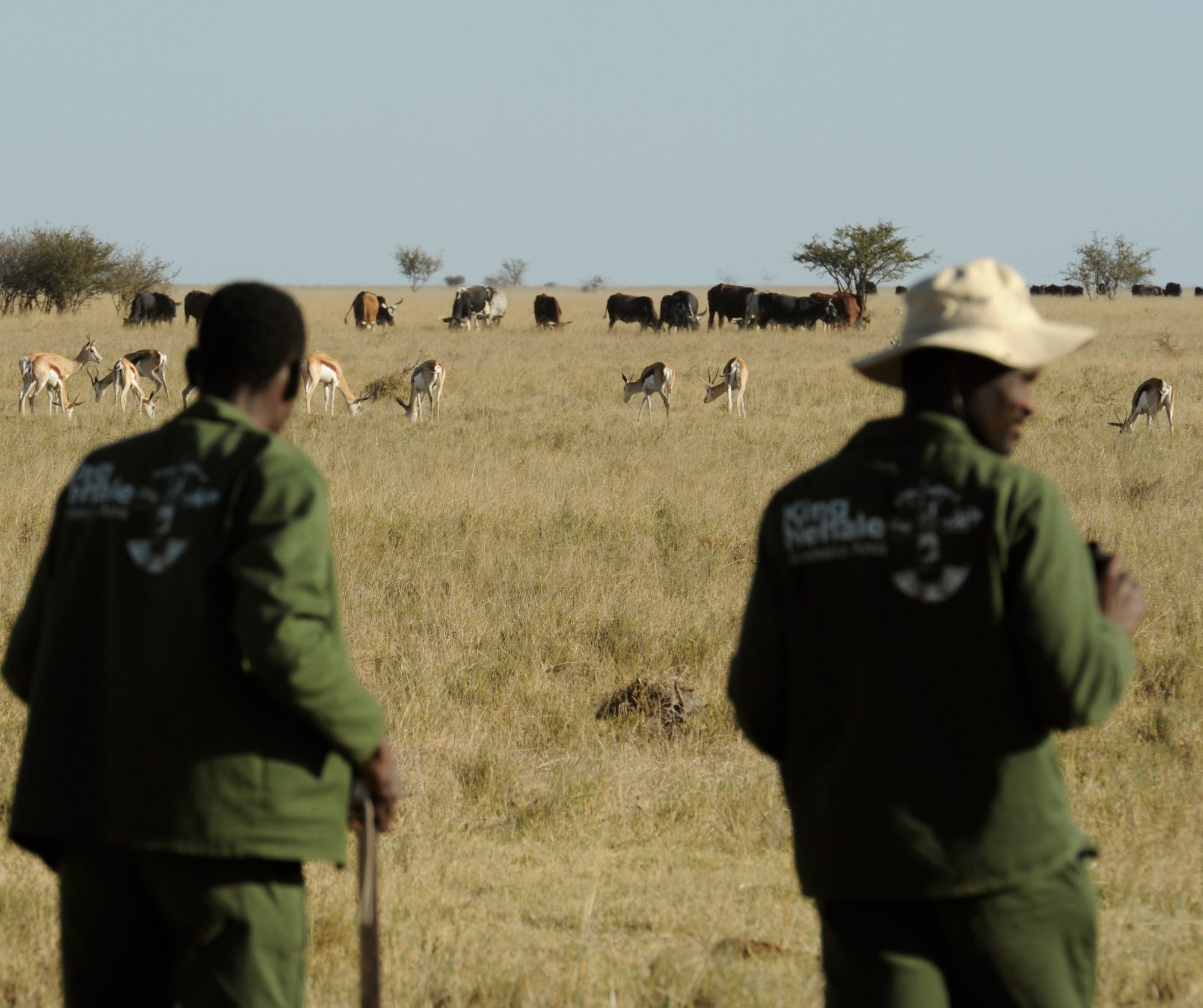
Namibia has one of the most intensive wildlife monitoring and utilisation control systems in Africa and the world:
Namibia uses a variety of systems to monitor and manage wildlife populations. The systems differ between national parks, community conservation areas and private farmland and are tailored to meet local needs. Management is by no means perfect in all areas or at all times. Yet the general approach of actively using wildlife outside parks for the benefit of rural communities has proven to be very successful, enabling healthy wildlife populations and strengthening local livelihoods. Namibia's dynamic conservation community ensures that environmental concerns are publicly recognised. While a balance between economic development and conservation in rural Africa is often problematic, most stakeholders strive to address issues. Collaboration between government, local communities, support NGOs and the private sector is a key to Namibia's conservation success.
No single approach or system is perfect. The flexibility to adapt to changing needs and circumstances is more important than any one system or approach.
- Namibia has excellent knowledge of its wildlife populations through ongoing research and regular, rigorous monitoring activities and systems, including aerial surveys, road counts, foot patrols and remote wildlife tracking using cutting-edge technology.
- The Ministry of Environment and Tourism has clear compliance requirements for wildlife management.
- Stringent monitoring and control systems for all wildlife harvesting facilitate effective management and minimise misuse.
- Offtakes are carried out according to annual quotas based on sustainable harvest rates and are controlled through permits and reporting requirements.
- The effects of offtakes over time are monitored and harvest rates are adapted to keep populations healthy if population changes occur.
- Regular quota revisions for wildlife harvesting are based on monitoring data and scientific guidelines.
- Land use objectives differ between national parks, community conservation areas and private farmland, resulting in varying wildlife densities in different areas.
- Challenges are a part of wildlife management, especially when attempting to balance the needs of large, dangerous wildlife with the needs of poor rural communities.
- Increasing human-wildlife conflict is a result of increasing game numbers and a sign of successful conservation; it is also one of the biggest challenges for wildlife management outside parks.
- Wildlife in open, unfenced systems is free to roam and is susceptible to drought and disease, resulting in natural population fluctuations.
- Continually adapting activities to changing circumstances facilitates sustainability.
- Namibia conforms to CITES and IUCN guidelines for wildlife use, as well as those of the International Convention of Biological Conservation.
- Namibia has several decades of positive experience with sustainable wildlife use – which has led to significant wildlife increases.
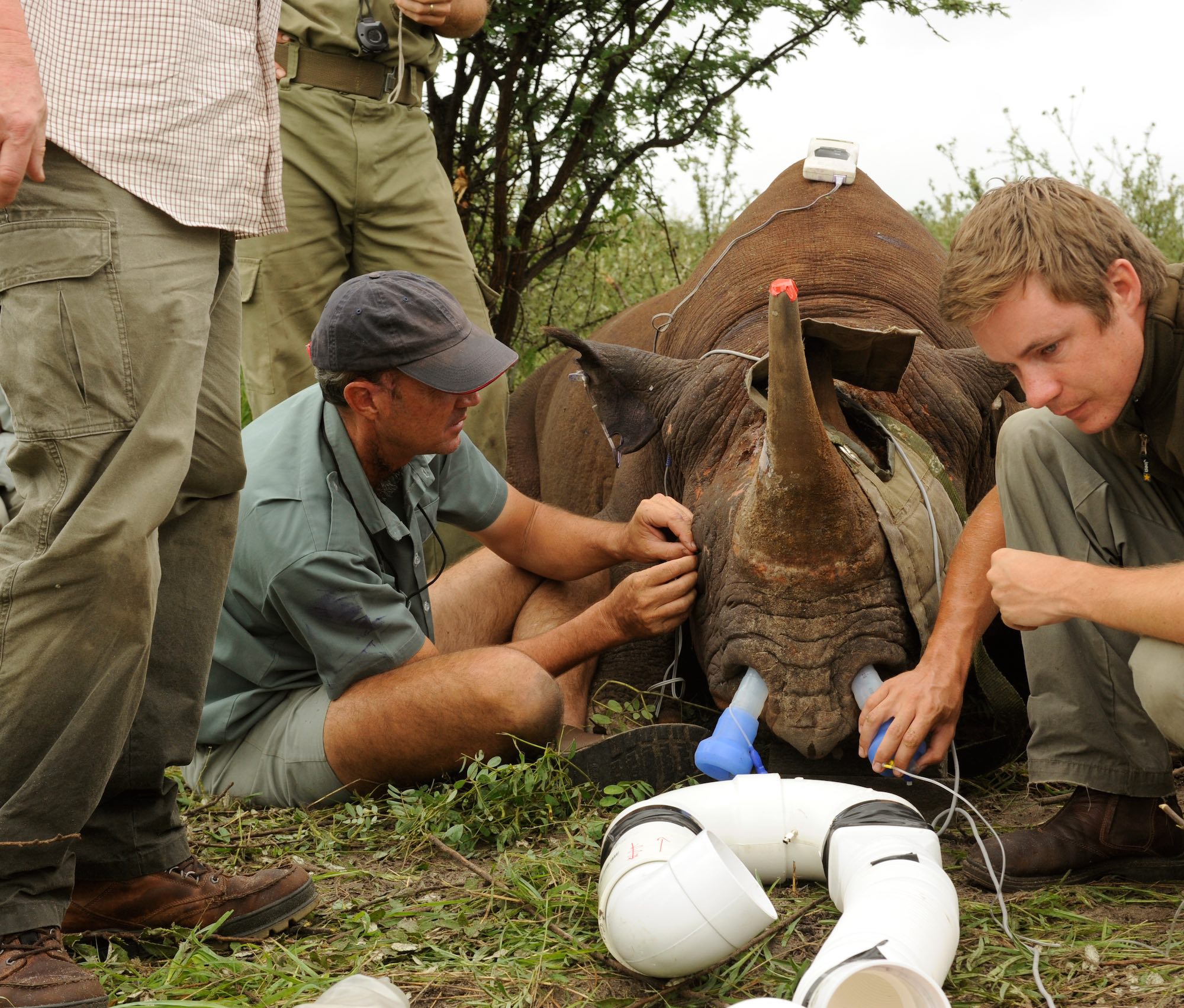
What exactly is sustainable wildlife harvesting?
Sustainable wildlife harvesting means harvesting a limited percentage of wildlife stocks without compromising the health of the overall population,
in order to generate income for local communities and enable wildlife management as a viable land use. When this is legally-entrenched, well-controlled and based on scientific principles and sound knowledge, it is fully sustainable.
Wildlife harvesting has been a natural factor controlling game populations throughout human evolution, just like the impact of lions and other predators.
Sustainable wildlife harvesting...
- Is carried out by local land holders.
- Creates incentives to keep wildlife on the land.
- Keeps natural habitats intact.
- Provides alternative income and strengthens rural livelihoods, especially in remote, arid environments.
- Enables a mix of land uses including livestock and cropping.
- Strengthens resilience against impacts from climate change.
- Strengthens resilience against external economic or political influences and reduces dependency on agriculture.
- Pays for conservation structures and anti-poaching activities.
- Provides meat for rural communities.
- Ensures stakeholders have a real interest in conserving wildlife.
- Reinforces traditional cultural values related to wildlife.
- Safeguards indigenous knowledge about wildlife.
Sustainable wildlife harvesting includes these activities:
- Conservation hunting (hunting with clear conservation outcomes targeting a very small percentage of the total population).
- Meat harvesting (using minimum-impact methods and offtake rates well below natural population growth rates).
- Live capture and sale (moving surplus animals from high density areas to low density areas within their natural range).
What exactly is conservation hunting?
Conservation hunting consists of harvesting small numbers of indigenous wildlife as part of a personal wilderness experience based on traditional human survival skills. Conservation fishing harvests indigenous fish according to the same principles. These activities have verifiable prerequisites and outcomes (see opposite page) while focussing on wilderness experiences and participation in natural dynamics through regenerative pursuits. They can be combined under the term wildernessing and promote the protection of free-roaming indigenous species in their natural habitat.
The Namibian conservation hunting fraternity adheres to guidelines for ethical hunting, including:
- Stalking game in natural habitat to ensure a wilderness experience and fair chase.
- Ensuring minimum suffering for hunted animals.
- Targeting only those animals that can be harvested without negative impacts on the overall population.
- Ensuring that all meat and other products of all hunted animals are used.
- Hunting predators in an ethical manner only as part of predator management.
Ethics may be considered a personal value statement and can differ between individuals and cultures. Hunting ethics should be directly linked to conservation outcomes, primarily to promote the protection of free-roaming indigenous wildlife in its natural habitat.


CONSERVATION HUNTING HAS THE FOLLOWING VERIFIABLE PREREQUISITES AND OUTCOMES:
- It is governed by a national legal framework with clear systems of controls and reporting requirements.
- It meets all CITES and IUCN species conservation criteria.
- It targets only free-roaming, indigenous species in natural habitats large enough to ensure healthy population dynamics.
- Wildlife population trends in the greater landscape are closely monitored and offtakes are adapted as needed to ensure the population health of all targeted species.
- Offtakes are sustainable, based on species-specific, scientifically-accepted annual quotas for the hunted population.
- It promotes the natural diversity of all indigenous fauna and flora in the hunting area.
- It safeguards wildlife habitat (the hunting area) against destructive land uses.
- A major portion of generated income goes back to the land holders and is spent on the conservation and human development needs of the hunting area.
- It employs local people to carry out conservation activities in the hunting area, including wildlife monitoring and anti-poaching activities.
- It mitigates human-wildlife conflict amongst local communities if these occur in, or adjacent to, the hunting area.
Through these criteria, conservation hunting creates clear incentives to adopt wildlife management as a land use.
WILDLIFE PRESERVATION WITHOUT HABITAT CONSERVATION IS MEANINGLESS!
Land conversion and resultant habitat loss is mostly overlooked by the public, but is the biggest killer of wildlife!
Wildlife needs large areas of intact habitat to ensure healthy populations:
- Most game needs undisturbed access to water, which it does not have if pressure by people, their livestock or their dogs is too high.
- Many species need to be able to roam widely in search of food, especially in areas with highly variable rainfall; fences, roads, settlements and other infrastructure all fragment habitat and inhibit the ability of wildlife to respond to seasonal food availability.
- Wild animals need shelter to which they can retreat when chased by natural predators or disturbed by people.
- Game needs large enough areas to engage in natural interactions, especially breeding and rearing of young.
- Wildlife can coexist with livestock, but is often eradicated by farmers who see it as grazing competition or a threat to infrastructure or safety.
- Wildlife is not tolerated in crop fields or gardens; effective zoning of crops into land use mosaics can leave adjacent wildlife habitats intact.
PEOPLE ONLY MAKE THE EFFORT TO KEEP WILDLIFE HABITATS INTACT IF THEY HAVE A TANGIBLE INCENTIVE TO DO THIS.
POACHING AND UNCONTROLLED EXPLOITATION DECIMATE WILDLIFE!
Poaching and uncontrolled exploitation should never be confused with legal, sustainable wildlife harvesting!
Poaching...
- Is an economic crime that bypasses the legal economy and provides no local income or benefits.
- Is stealing from the rightful owners – the local communities.
- Steals valuable wildlife products for purely personal gain – just like cattle theft, shoplifting or film piracy steal from legal industries.
- Introduces organised crime into local communities, disrupting social structures and values, and undermining legal livelihoods.
- Undermines conservation activities and harms the resource base.
- Undermines tourism and other legal wildlife uses.
- Has a severe impact on high-value species.
Uncontrolled exploitation...
- Places immediate financial gain over sustainability.
- Abuses legal loopholes to exploit resources.
- Takes advantage of weak control mechanisms.
- Relies on weak governance and corruption.
- Benefits only a small number of individuals.
- Undermines legal livelihoods and sustainable activities.
- Undermines conservation activities and harms the resource base.
- Undermines tourism and other legal wildlife uses.
- Is not sustainable.
COMMERCIAL POACHING, ESPECIALLY OF RHINOS AND ELEPHANTS, IS A HUGE THREAT TO NAMIBIA'S VALUABLE WILDLIFE AND TO A VARIETY OF INDUSTRIES BASED ON IT.
TROPHY BREEDING AND SHOOTING DISCREDITS ALL SUSTAINABLE WILDLIFE HARVESTING!
Trophy shooting activities motivated only by financial gain should not be confused with conservation hunting!
These and similar practices make no conservation contributions and are not part of conservation hunting:
- Canned shooting (shooting animals in small enclosures).
- Put-and-take shooting (releasing captured trophy animals for the sole purpose of shooting them).
- Breeding lions and other predators for trophy shooting.
- Breeding rarities such as black springbok, golden oryx etc. for the trophy trade.
- Introducing exotic species such as blesbok, nyala etc. for trophy shooting.
- Unethical shooting of animals based only on their trophies (rather than fair chase hunting based on a wilderness experience).
- Genetic manipulation of species gene pools to enhance trophy quality.
GAME USE MUST BE ABLE TO PROVE CONSERVATION OUTCOMES TO BE ACCEPTED AS A VIABLE CONSERVATION ACTIVITY
EMOTIONAL ANTI-HUNTING CAMPAIGNS UNDERMINE CONSERVATION!
Anti-hunting campaigns based on emotional opinions should not derail proven conservation approaches!
In a modern world of inter-connectivity, social media and concerned global citizens, well-meaning but at times misguided international opinion and pressure don't always bring positive change – they also have the ability to influence and change legitimate local activities for the worse. Local communities and environments are often the worst affected.
- Calls for a hunting ban in Namibia are based on urban values and opinions, not on rural conditions and needs, and are often orchestrated by animal-rights organisations and misguided followers.
- A small, economically secure urban elite is challenging legal and highly beneficial activities in Africa from an idealistic moral standpoint.
- A hunting ban dispossesses and disempowers local decision making and enforces a foreign moral view upon Africans.
- A hunting ban would have the most negative impacts on the elements that the international public is attempting to support – wildlife populations and local people outside national parks.
- In-depth understanding of wildlife dynamics, based on scientific principles, should not be dismissed by emotional, misguided external public opinions.
NAMIBIA'S WELL-DOCUMENTED, SUCCESSFUL APPROACH TO CONSERVATION SHOULD NOT BE JEOPARDISED BY OUTSIDERS
What would be lost, if wildlife could not be used to generate income for local communities outside parks?
Hunting bans, which could consist either of Namibia stopping the activity of hunting, or of other countries stopping the import of hunting trophies – thereby closing the market – would have detrimental effects for wildlife outside parks, and for people currently benefitting from that wildlife.
- The loss of income to the national economy is currently not quantified, but is likely to be over a billion Namibia Dollars.
- A hunting ban would result in at least N$ 39.6 million of lost annual returns for conservancies if all wildlife harvesting were banned, and would have a direct impact on at least 48 of the 56 conservancies currently generating returns from natural resources.
- Loss of conservation hunting income would result in at least 30 conservancies becoming financially unsustainable.
- If no immediate alternative income streams could be secured, a large percentage of the currently 684 community game guards and resource monitors employed in conservancies across Namibia would stand to lose their jobs.
- The loss of natural resource management structures would have immediate negative effects on wildlife populations and the health of other natural resource stocks.
- The loss of community game guards would significantly reduce Namibia's ability to combat poaching, especially of free-roaming rhino and elephant.
- Discontinuing regular wildlife monitoring and annual game counts would seriously undermine effective wildlife management.
- The loss of natural resource returns for local communities would result in an immediate reduction in people's tolerance of problematic wildlife such as elephants, lions and other predators.
- Reduced tolerance of wildlife would lead to an increase in retaliatory killing of problematic animals.
- A reduced sense of ownership over wildlife would lead to increased bush-meat poaching as well as poaching of high-value species.
- Across much of the currently 169,756 square kilometres of community conservation area, wildlife would no longer be considered a land-use priority and would be displaced by other uses such as livestock.
- On a large percentage of freehold farms with limited or no tourism potential, wildlife would also be displaced.
MOST LARGER WILDLIFE SPECIES WOULD BE DISPLACED FROM MUCH OF NAMIBIA IF THEY COULD NOT BE USED TO GENERATE INCOME
Using wildlife ensures its value for land holders and KEEPS IT ON THE LAND!
The economic value of wildlife creates the incentive for land holders to include wildlife as a land use. If wildlife is not used, but preserved only for its own sake, it has little place outside parks, because land outside parks is used to generate rural livelihoods and contribute to the national economy.
- Eat game meat to keep wildlife on the land – eat beef, and put more cattle on the land.
- Harvesting sustainable numbers of wildlife keeps overall populations healthy and avoids over-stocking.
- Conservation hunting promotes wildlife conservation and habitat protection.
- Go wildernessing to truly experience Africa's natural splendour and traditional human survival skills.
THE LEGAL USE OF WILDLIFE ENABLES LAND HOLDERS TO SEE IT AS PART OF THEIR LIVELIHOOD, ENSURING HEALTHY POPULATIONS
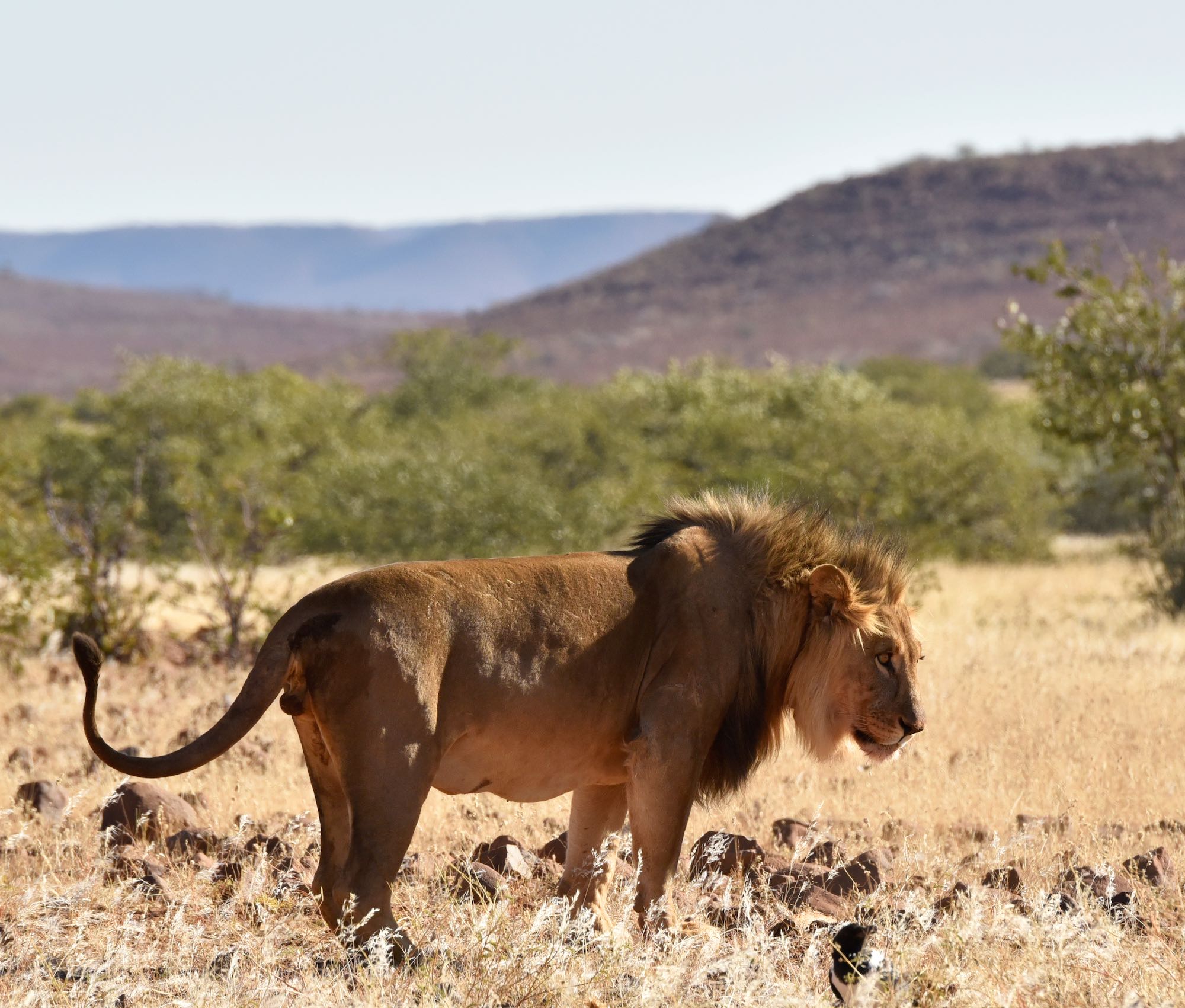
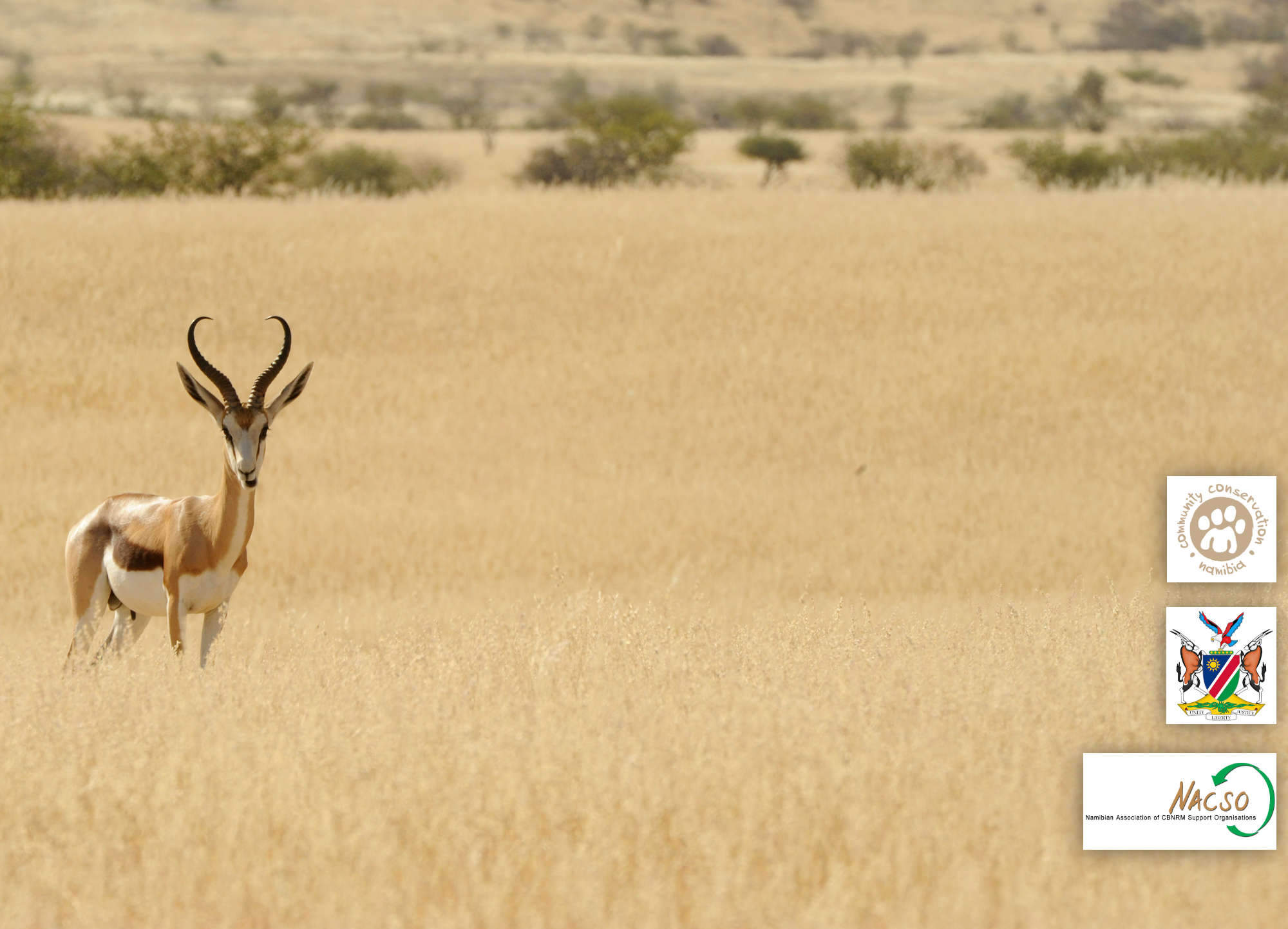
A publication of:
NACSO Natural Resources Working Group
www.nacso.org.na
Further Information Resources:
Community conservation in Namibia: www.nacso.org.na
(especially the annual Community Conservation Report)
State protected areas in Namibia: www.meft.gov.na
International wildlife trade regulations: www.cites.org
International biodiversity conservation: www.iucn.org
The Namibian Association of CBNRM Support Organisations (NACSO)
embraces a variety of NGOs and individual members, who provide a range of technical and funding support to community conservation. Three NACSO working groups, namely the Natural Resources Working Group (NRWG), the Business, Enterprises and Livelihoods Working Group (BELWG) and the Institutional Development Working Group (IDWG), facilitate coordinated service provision to rural communities.
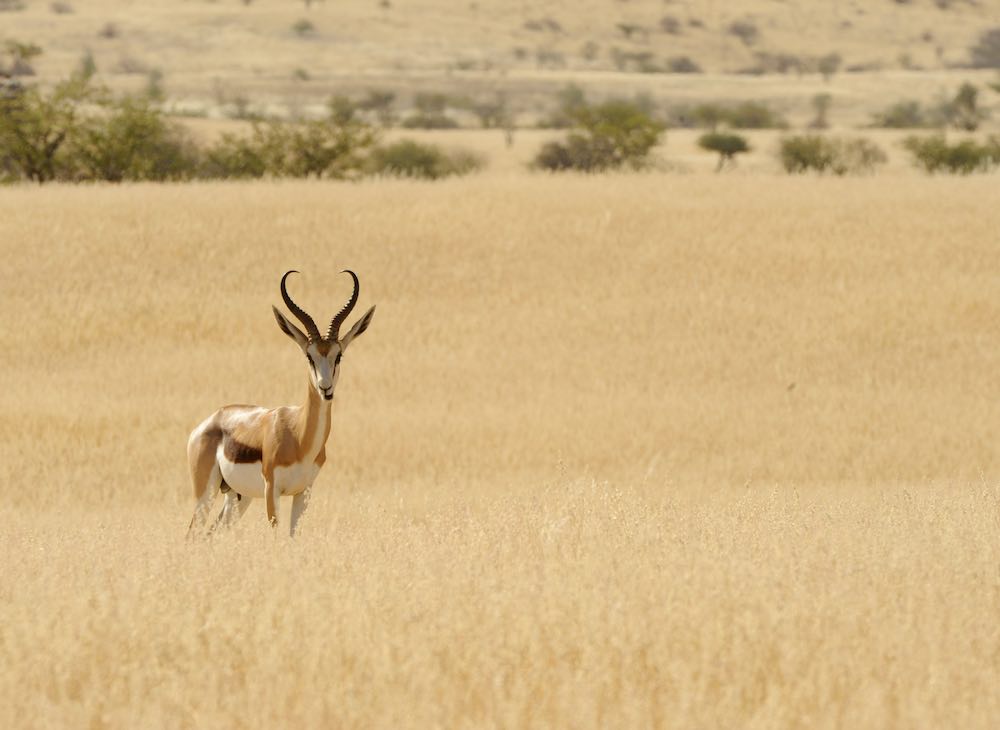

We use cookies to monitor site usage and to help improve it. See our Privacy Policy for details. By continuing to use the site, you acknowledge acceptance of our policy.